How to Make an Airplane Pillow Cover
Whether you want to surprise a child with a travel accessory featuring their favorite super hero or cartoon character, or you’d prefer to rest your sleepy head on something clean during long flights, this pillowcase pattern is for you. Made of flannel for softness with a contrasting mitered border for style, this case fits the pillows supplied by airplane companies.
Supplies
- Two 12ʺ x 16ʺ rectangles of flannel
- 5/8 yard of cotton print fabric for borders, cut into eight 2-1/2ʺ by width of fabric strips (approximately 43ʺ wide)
- Two 4ʺ x 12ʺ rectangles of cotton print
- Coordinating thread
- Scissors
- Pins
- Clear quilter’s ruler
- Pencil or chalk marker
- Quarter-inch foot (BERNINA Patchwork Foot #37)
- Edgestitch foot (BERNINA Edgestitch Foot #10)
Step 1) Assemble the envelope back of the pillow.
Prepare the back of the pillow cover by cutting the 12ʺ x 16ʺ flannel rectangle into two pieces: One 6ʺ x 12ʺ rectangle and one 10ʺ x 12ʺ rectangle.
Pin one 4” x 12” print fabric rectangle to a long edge of each flannel piece, right sides together. Stitch. Press the seam allowances toward the print fabric.
Turn under 1/2ʺ along the long unfinished edge of each print border strip.
Fold the trim in half, with enough overlap for the folded edge to just hide the seamline stitches. Pin in place.
Turn your work over and pin from the front, removing the pins from the back.
Attach the edgestitch foot to your machine and “stitch-in-the-ditch” to secure the folded edge in place.
Repeat for the second pillow back piece.
Overlap the two pillow cover back pieces about 2ʺ, with the narrow piece over the wider piece as shown. Pin to secure.
Baste the edges together.
Step 2) Add the borders and miter the corners.
Center a border strip to one edge of the pillow cover back. Do not trim to fit! Pin in place.
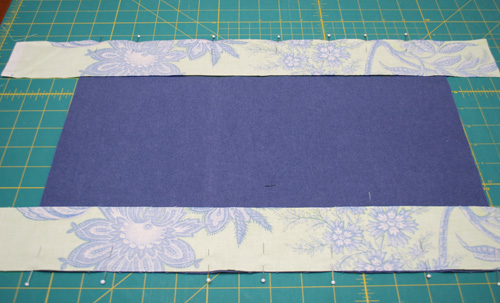
Repeat for the remaining three edges of the pillow cover back and the four edges of the pillow cover front.
Stitch the border strips in place with a 1/4″-wide seam allowance, taking great care to start and stop 1/4″ from each end. This step is critical, so make sure you are not sewing all the way to the end.
Tip: A 1/4″ foot, such as BERNINA Patchwork Foot #37, has sides that are exactly 1/4″ from the center needle position. It also has markings 1/4″ in front and in back of the needle, making it easy to stop and start 1/4″ from an edge.
When all eight strips have been sewn to the pillow cover front and back, you are ready to miter the corners. This step scares many crafters but is actually very simple, so don’t fret!
Pick a corner and fold it diagonally to create a triangle. The excess trim will naturally stack on itself.
Place the clear quilters ruler over the corner at a 45° angle, with the edge of the ruler meeting the very last stitch of the seam. (The 13ʺ line in the photo.)
Draw a line along this edge to mark your stitching line.
Stitch along the drawn line, then trim the seam allowances to about 1/4ʺ wide.
Pin the pillow cover front and back right sides together. If the edges are not even, you may trim them accordingly.
Sew around all sides of the pillow cover using a 1/4ʺ-wide seam allowance.
Turn the pillow cover right side out. Pin around the outer border to keep the layers from shifting.
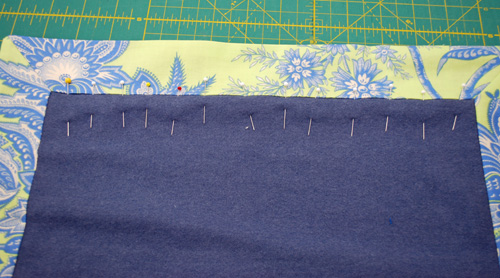
Stitch-in-the-ditch between the border trim and the flannel around all four sides of the pillow cover.
Press and you’re done!
What you might also like
17 comments on “How to Make an Airplane Pillow Cover”
-
-
Oops! That’s my fault, not Juliette’s; at the very end of step 1 it should say “Stitch.” I’ll fix the PDF and get it put back right away. Thanks for catching that! Jo
-
-
a picture of the back of the pillow would very helpful!
-
In reading step one, i am confused. You want to cut one of the 12″ X 16″ pieces into a 6″ X 16″ and a 10″ X 16″ piece. That doesn’t add up. Then I am supposed to pin the 4″ X 12″ print on the long side. Do you mean to cut the piece into two pieces, one 6″ X 12″ rectangle and one 10″ X 12″ rectangle?
-
Sorry – Another editing error. That should read “cut one of the 12″ x 16″ pieces into a 6″ x 12″ and a 10″ x 12” piece.
-
-
I love this pillow cover. How may I obtain the pattern?
-
Hi Joyce – Just below the description of the project, above the yellow box, there’s a link to the project. On my computer it’s in red, underlined. Click on the link and a PDF of the instructions will open. Happy sewing! Jo
-
-
It seems that the last instructions of the pattern are missing in the pdf. The last step listed is step 4, and the last thing it says to do is “Pin to Secure”.
-
I’ve replaced the PDF file; you should find four pages now. Jo
-
-
The instructions stop with step 4 on page 2 of the PDF file. There is a 3rd page, but there is nothing on it. Where is the rest of the instructions?
-
This cannot be all the instructions. Page 3 didn’t even load and I’ve tried it several times. Did anyone else have trouble?
-
When I am in the project link, I am missing page 3 of the instructions. I can print the PDF file, but won’t until I can get page 3. Thank you.
-
I see the entire pattern now, thank you!
-
Thanks for fixing the problem with all the pages showing up. I have it now and have printed it. I plan to make 4 of these as my daughter’s family is taking a long plane trip this summer. The kids are 2 and 4 and I am hoping this will entice them to sleep on the plane. I know my daughter will be happy to have these for sanitary purposes! Thank you for a really useful and cute pattern.
-
P.S. to my above comment. I am also going to learn to make mitered corners. This has been on my to do list for a long time! What a great project to learn on.
-
Thanks for uploading all the pages now.
Leave a Reply
You must be logged in to post a comment.
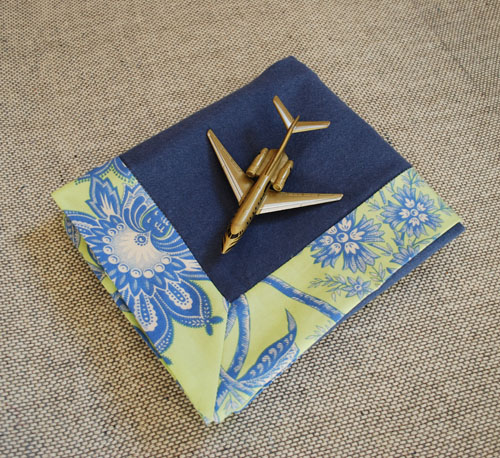
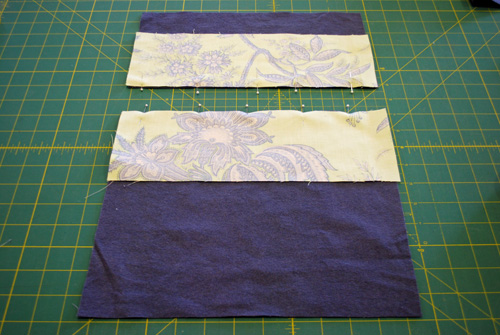
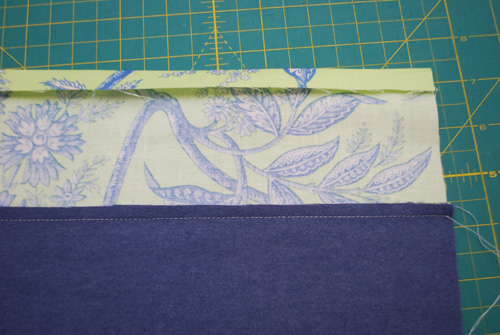
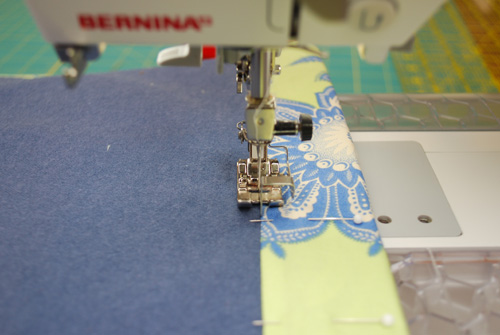
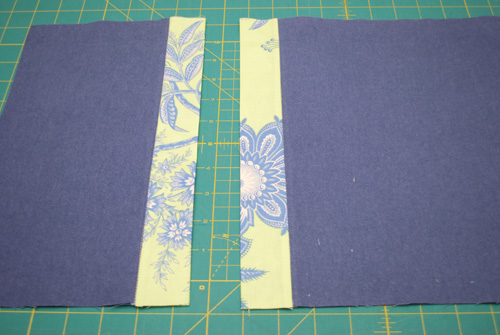
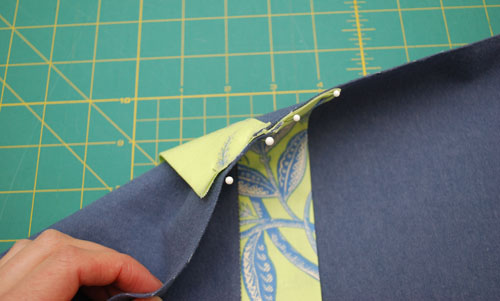
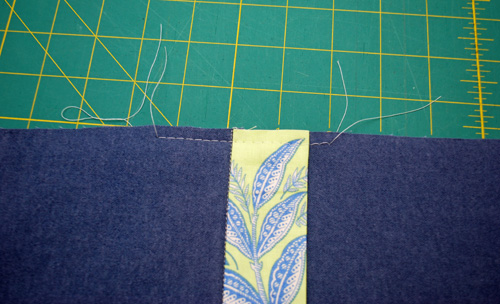
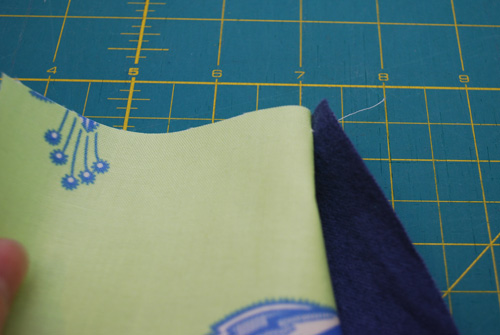
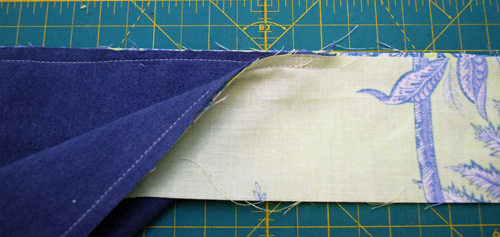
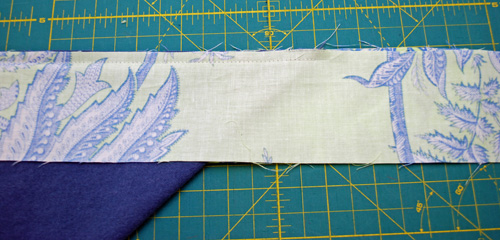
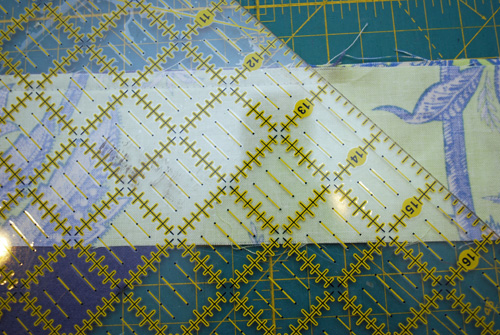
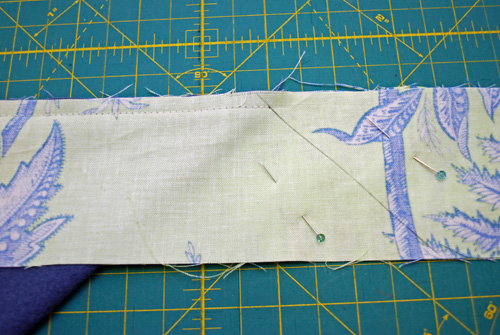
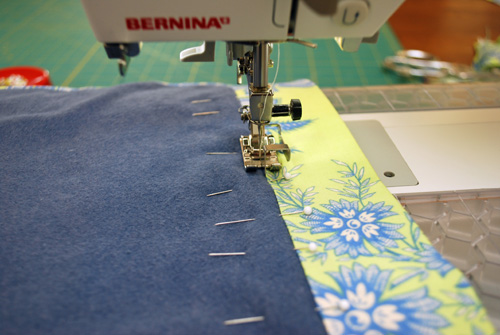




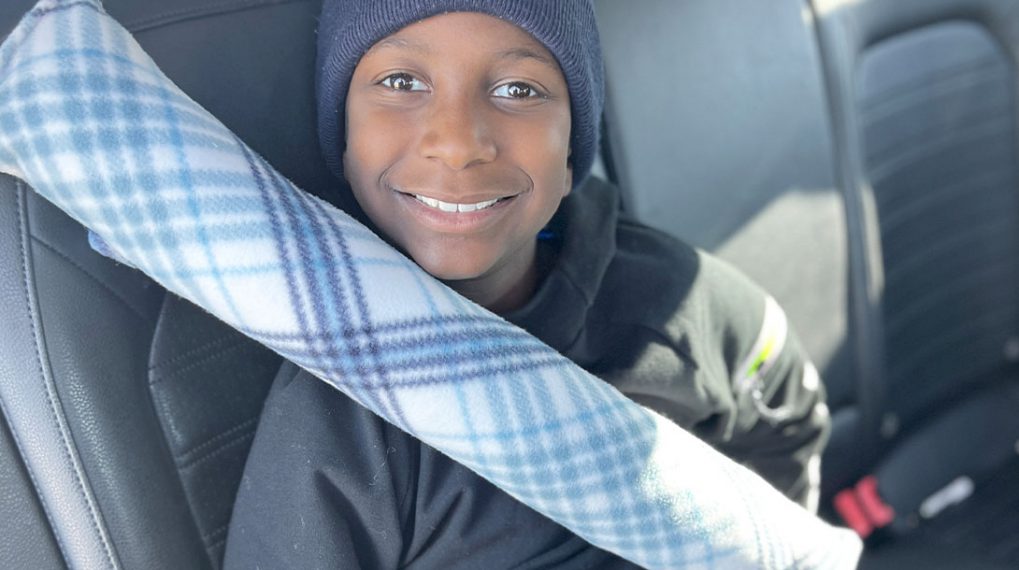
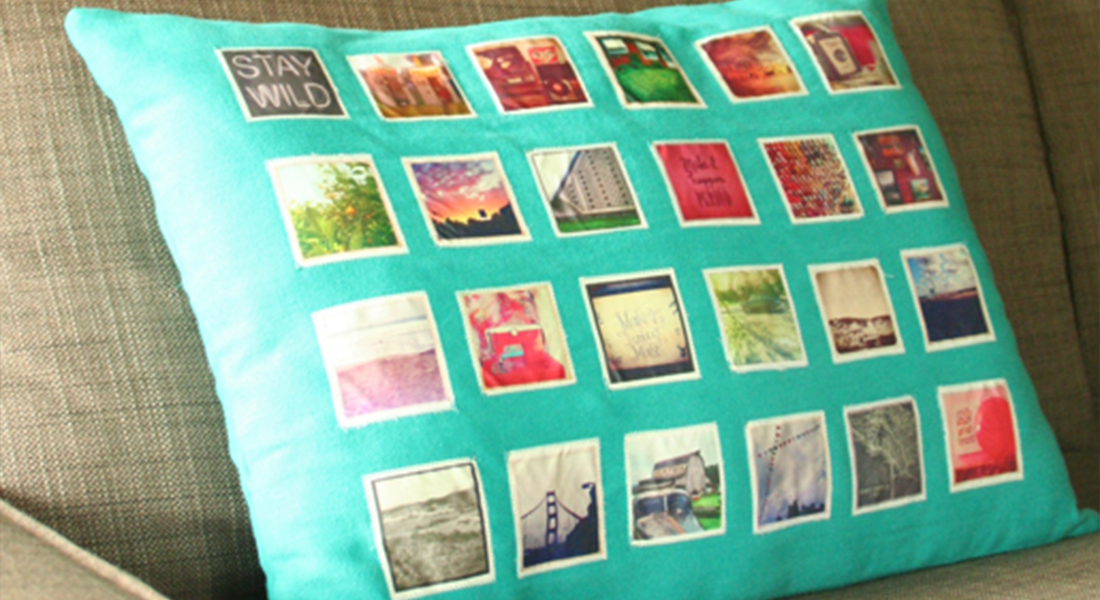
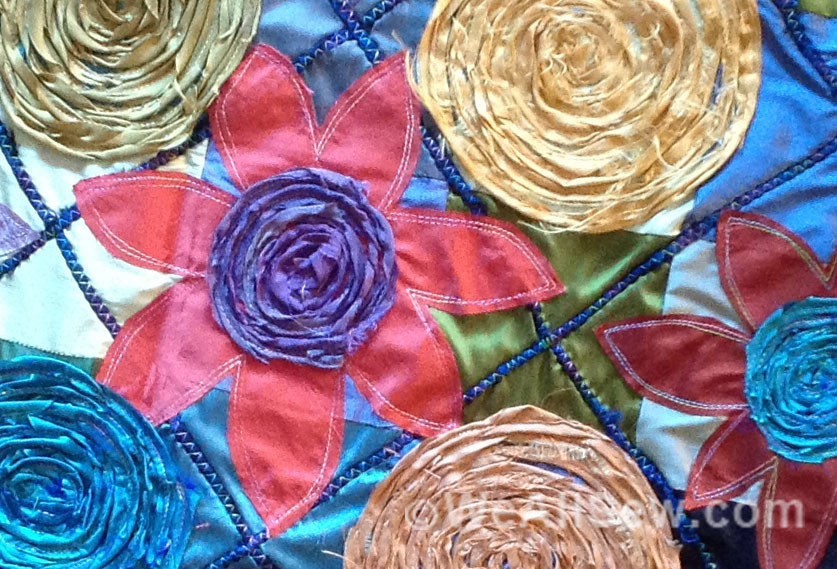
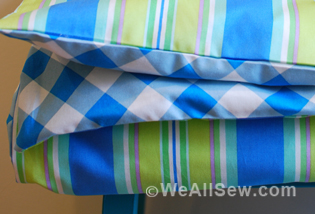
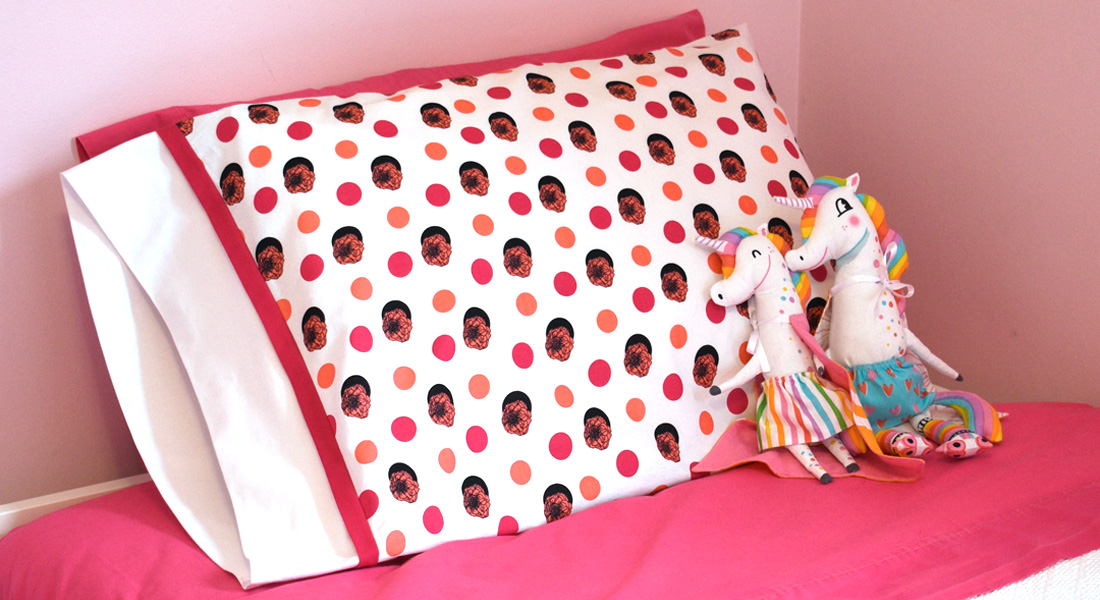
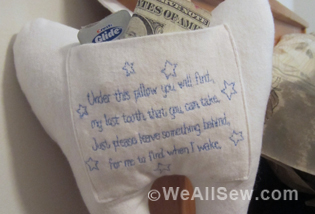
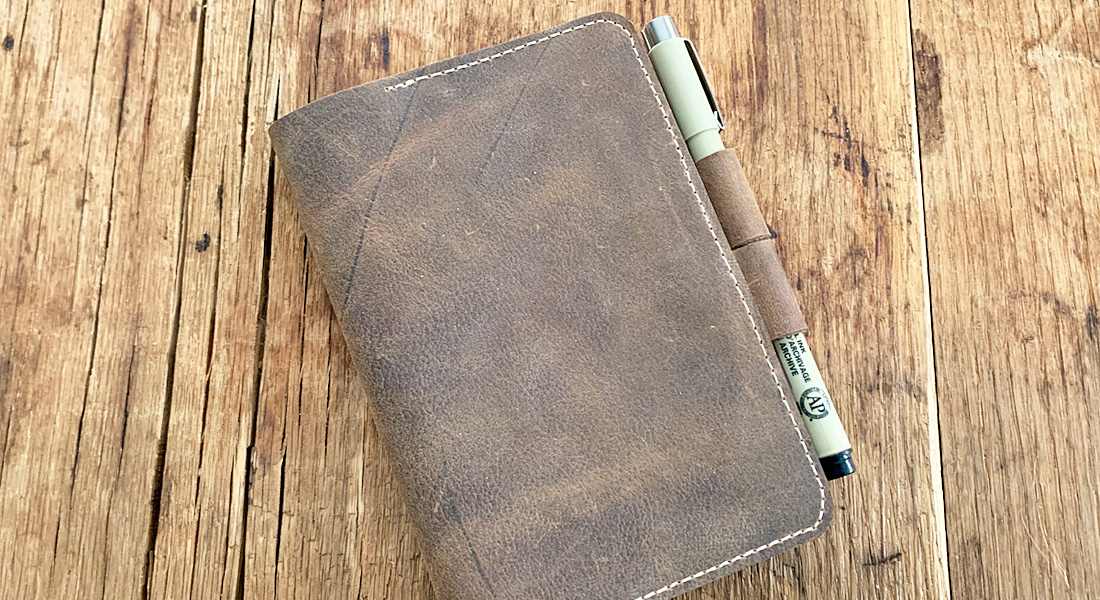
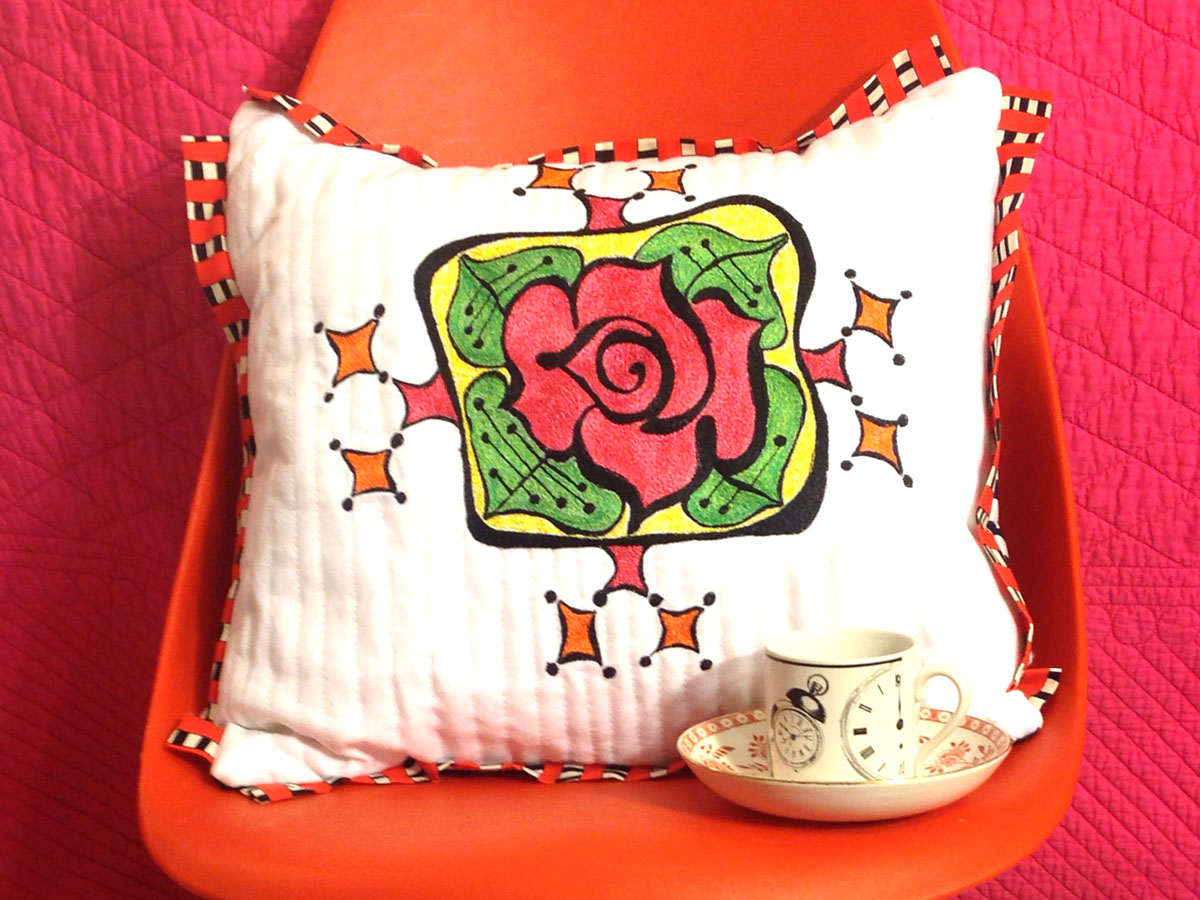
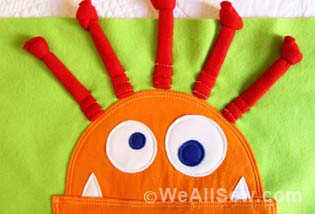

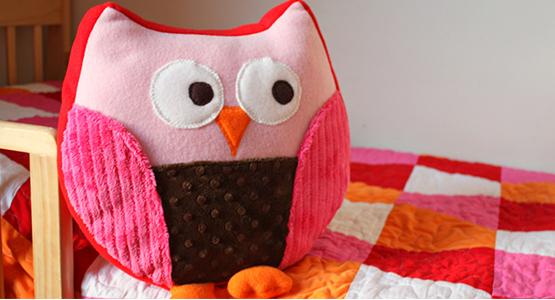
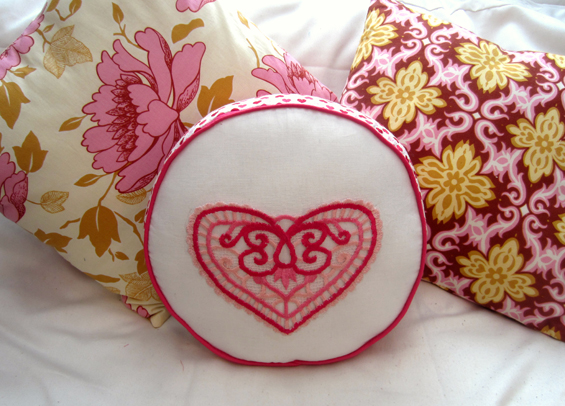
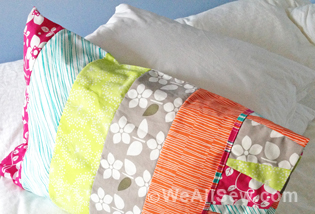
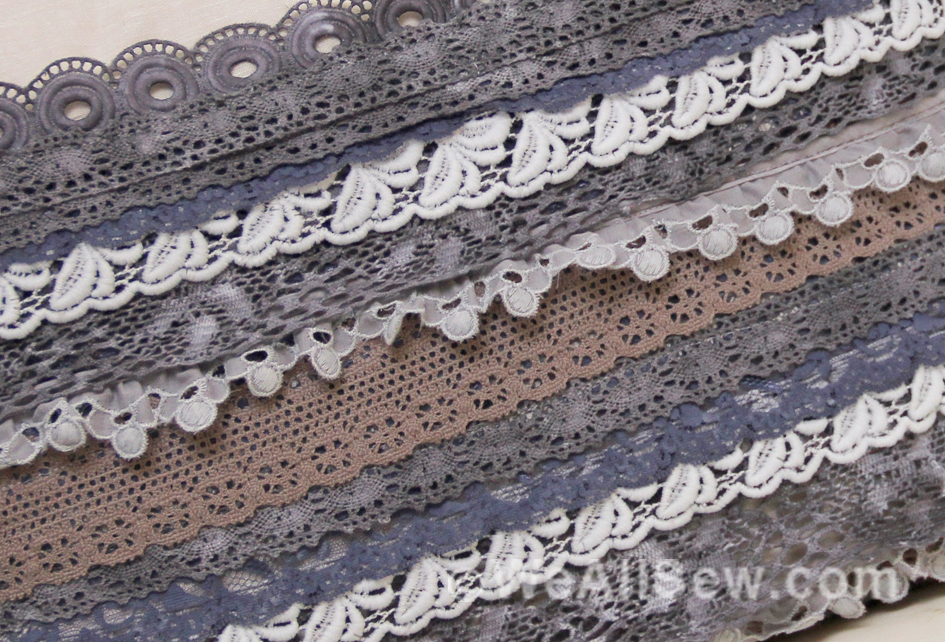
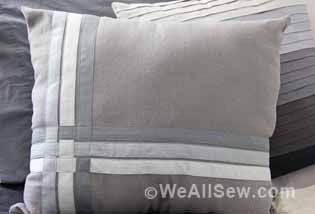
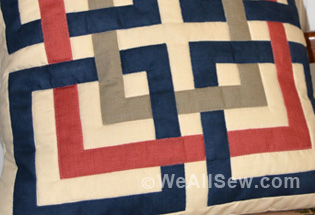
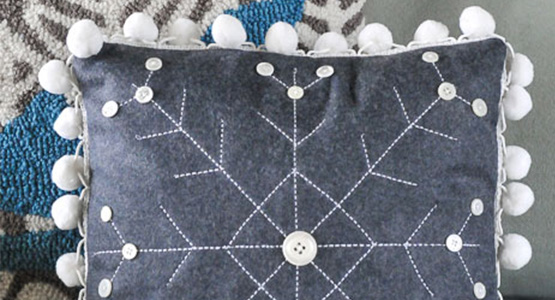
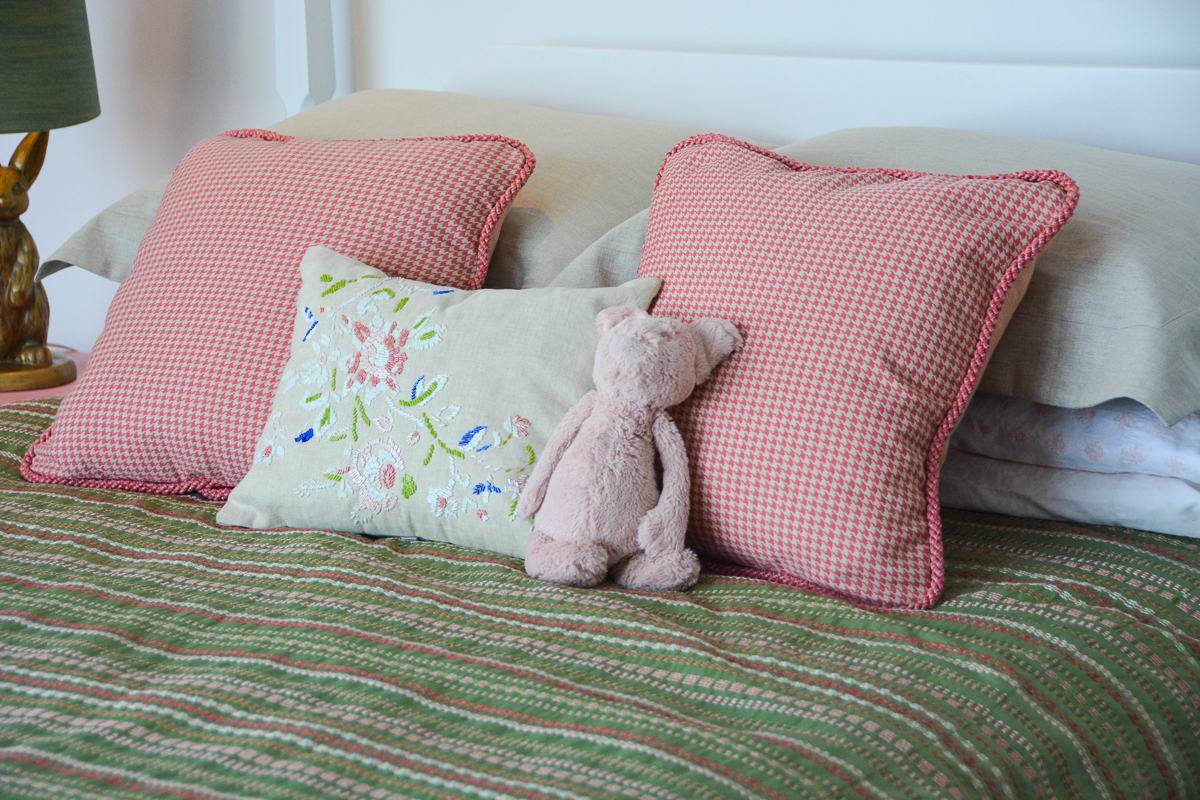
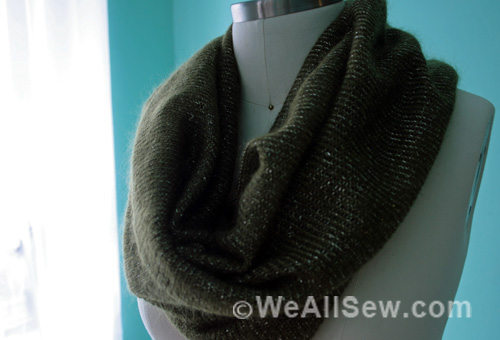
![Is that big, bold scrap of fabric staring at you? This quilt square is designed to let a large print fabric shine. This simple block is quick to make and easily stitched into a pillow. With a bit more fabric you can turn it into a placemat or table runner. The perfect project for turning fabric scraps into something bold and beautiful. Geometric Quilt Block Pillow Supplies Large scraps or fat quarters of 100% cotton quilter's fabrics: One large print One light solid or small print One medium solid or small print One dark solid or small print 1/2 yard of white cotton fabric for the pillow lining 1/2 yard of fabric for the pillow back Coordinating thread 14" square pillow form Universal or Sharp needle, size 75/11 1/4" foot (BERNINA Patchwork Foot with Guide #57) Straight stitch foot (BERNINA Straight Stitch Foot #13) Zigzag foot (BERNINA Reverse Pattern Foot #1) or overlock foot (BERNINA Overlock Foot #2) Rotary cutter and self-healing cutting mat Clear acrylic gridded ruler Download and print the Geometric Quilt Block Pillow Cutting and Piecing Diagrams: [download id="90"] Step 1) Cut the fabric pieces. Accurate cutting helps avoid crooked, puffy, or uneven seams in your quilt block. Use a self-healing mat, a clear acrylic gridded ruler, and a rotary cutter to cut the pieces for your quilt block. Rotary cutters Rotary Cutting Tips Self-healing mats come in different sizes. 24" x 36" is a good size to have, but if you don't have a dedicated sewing space or don't plan to use it often, try an 18" x 24" mat instead. Acrylic rulers also come in many shapes and sizes. A standard 6" x 24" ruler is a good start, and I've also found a 12-1/2" x 12-1/2" square ruler to come in very handy. Rotary cutters are measured by the size of the circular blade in millimeters. A 45 mm rotary cutter is perfect for making the kind of straight cuts needed for this project. Use the grid on your cutting mat to help square up fabric pieces when needed, but when measuring to cut the pieces be sure to use the gridlines on the acrylic ruler. Hold the ruler firmly on top of the fabric, and use a steady, firm, pressing motion when cutting with the rotary cutter. Cut one of each pattern piece from the corresponding fabrics (also see downloaded Cutting Diagram): Piece #1 - Light solid or small print, 4" x 3" Piece #2 - Dark solid or small print, 4" x 5" Piece #3 - Light solid or small print, 4" x 2-1/2" Piece #4 - Large print, 9-1/2" x 9-1/2" Piece #5 - Light solid or small print, 2-1/2" x 9-1/2" Piece #6 - Dark solid or small print, 14-1/2" x 2-1/2" Piece #7 - Medium solid or small print, 14-1/2" x 3-1/2" Step 2) Piece the block. Set your sewing machine for a straight stitch about 2.5 mm long. Attach a quarter-inch foot, such as BERNINA Patchwork Foot with Guide #57, to your sewing machine. The blocks will be sewn together using a 1/4"-wide seam allowance. Stitching an accurate 1/4"-wide seam will help your block come together with nice, straight seams and avoid pieces not fitting together as you sew on. Geometric Quilt Block Pillow Patchwork Piecing Tips Us a quarter-inch foot to help you keep the correct seam allowance width. The BERNINA Patchwork Foot #37 is designed specifically so that following the edge of the foot will create a 1/4"-wide seam allowance. BERNINA Patchwork Foot with Guide #57 is similar to foot #37, but adds a metal guide at the side of the foot to help you like up your fabric piece exactly at the edge of the foot. Attach a seam guide to the bed of your sewing machine along the 1/4" seam allowance mark on your stitch plate, then place the edges of your fabric pieces against the guide as you sew. Alternatively, place a piece of blue low-tack painter's tape along the 1/4" seam allowance mark on your stitch plate as a guide for your fabric. Piecing Diagram Geometric Quilt Block Pillow Start by stitching Piece #1 to Piece #2 along one 4" edge. Press the seam allowances to one side. Next, sew Piece #3 to Piece #2 along one 4" edge as shown in the diagram; press after stitching. Geometric Quilt Block Pillow Continue adding pieces to the block as shown in the diagram, pressing each seam as you go. Tip: When pressing seams, be sure to press DOWN with the iron as opposed to "ironing," or pushing the iron back and forth over the seam. Ironing (back and forth motion) can cause straight seams to go crooked. Pressing straight up and down with the iron will help your seams stay nice and straight. Press all seams again from the back of the block when finished. Geometric Quilt Block Pillow The finished block should measure 14-1/2" x 14-1/2". Geometric Quilt Block Pillow Step 3) Construct the pillow cover. Cut one 14-1/2" x 14-1/2" square of fabric for the pillow lining. Cut two 11" x 14-1/2" rectangles of fabric for the pillow back. Create a 2" hem along one edge of each 11" x 14-1/2" pillow pocket piece: Turn under 1" along one long edge; press. Turn under an additional 1"; press. Geometric Quilt Block Pillow Topstitch close to the inner edge of the folded hem with a straight stitch, using either a multi-purpose foot or a straight stitch foot. Geometric Quilt Block Pillow Layer and pin the pieces of the pillow together: Begin with the 14-1/2" square of white cotton for the lining. Add the finished patchwork block, right side up, matching all edges. Add one pocket pillow back, right side down, matching the raw edges. The finished hem will be about 5" from the other end of the pillow. Add the other pocket pillow back, right side down, on the opposite edge. The hemmed edges will overlap. Geometric Quilt Block Pillow Pin around all four edges of the pillow. Set your sewing machine for a straight stitch of 2.5 mm long. Stitch around all four sides of the pillow using a 1/2"-wide seam allowance. Trim all seam allowances to 1/4". Attach an overlock or zigzag stitch foot to your sewing machine. Set your machine for a zigzag or overlock stitch and sew over the raw edges to keep them from unraveling. Geometric Quilt Block Pillow Turn the pillow cover right side out, gently pushing each corner from the inside to turn it. Insert the 14"-square pillow form through the opening in the back of the pillow cover. If needed, use a little fiberfill to help fill out the pillow corners. Geometric Quilt Block Pillow Geometric Quilt Block Pillow](https://weallsew.com/wp-content/uploads/sites/4/2014/01/Geometric-Quilt-Block-Pillow-WeAllSew.jpg)

Hi Juliette,
In step 1, I think you forgot to tell us to sew the two pieces together and the size of the seam allowance. Since I quilt, I’m used to a 1/4″ seam, but you may mean a 5/8″ seam. That makes step 2 a little confusing, but I see in the picture that there is a sewn seam. Thanks,